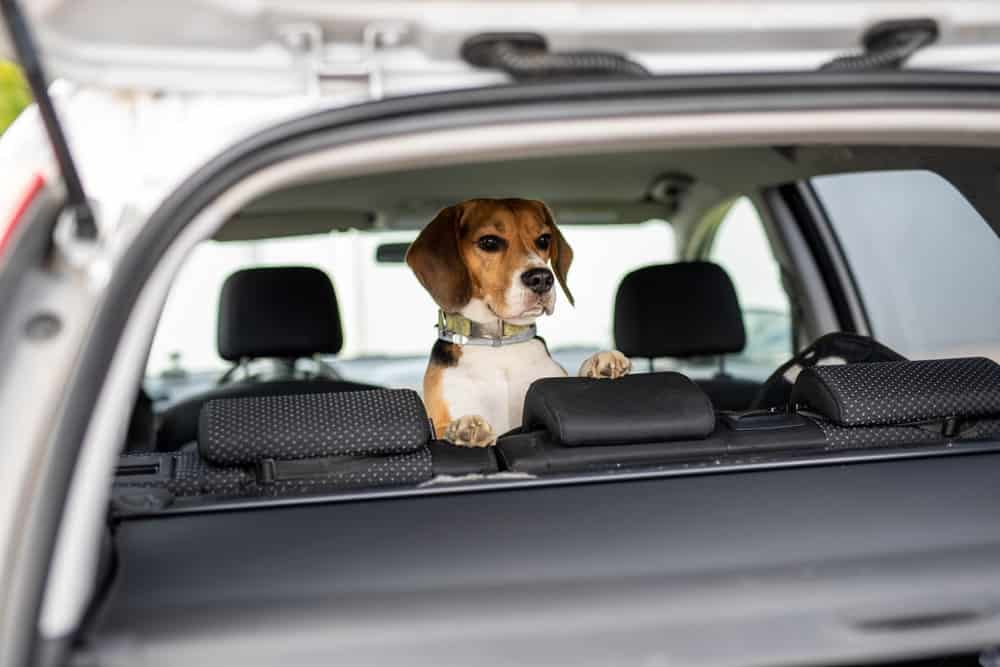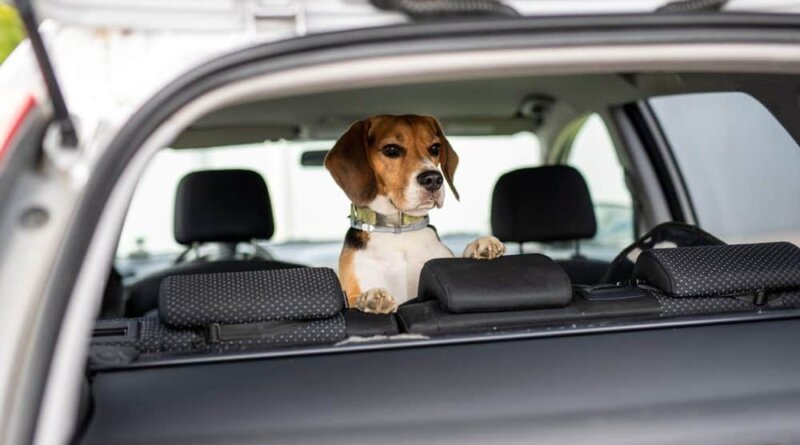Hurricane Prep for Pets Essential in Nation in Shutdown
Global shutdowns and social distancing requirements combined with the threat of landfall by two severe storms at the same time mean it’s more important than ever to take hurricane prep seriously, particularly if you have pets to provide care for, too.
The Humane Society of the United States is urging residents to make a preparedness plan for their pets now.
“Making a disaster plan is more essential than ever during the COVID-19 pandemic because some services may be limited and families may need to give extra consideration to their plans to align with social distancing recommendations,” said Diane Robinson, disaster services manager for the Humane Society of the United States. “Even amid the pandemic, it is imperative to heed evacuation orders from local officials and remember: If it isn’t safe for you, it isn’t safe for your pets.”
Evacuating amid the COVID-19 pandemic, especially for families with pets, requires planning to ensure health and safety. If possible, identify family members and or friends in a safe location who can provide you and your pets a place to shelter in the event you need to evacuate. Staying with a friend or family member in a safe location is preferable to relying on an emergency shelter during this time because services may be limited and social distancing will likely be harder to maintain.
Additionally, it is advisable to have a disaster kit ready in your home at all times.
Some items that should be included:
- Food and water for at least 5 days for each pet. Also bring bowls and a manual can opener if you are packing canned pet food.
- Medications for at least 5 days and all medical records, including vaccination history. Keep these stored in a waterproof container. You may also consider storing them digitally on a flash drive or online.
- Make sure your pet is wearing a collar with tags for identification. Microchipping your pet is ideal as collars can be easily removed.
- Pack a pet first aid kit.
- Litter box with extra liter and a scoop.
- Sturdy leashes, harnesses and carriers to transport pets safely.
- Current photos of you with your pets and descriptions of your animals.
- Comfort items, which may include a pet bed or a special toy, to reduce stress.
- Written information about your pets feeding schedules, medical conditions and behavior issues along with the name and number of your veterinarian. This information can also be kept digitally.
Other useful items:
- Masks
- Hand sanitizer
- Paper towels
- Plastic trash bags
- Grooming items
- Household bleach

Some helpful tips for the safety of your furry family members:
- If it isn’t safe for you, it isn’t safe for your pet. Never assume that you will be allowed to bring your pet to an emergency shelter. Before a disaster hits, call your local office of emergency management to verify that there will be shelters in your area that take people and their pets. Keep in mind that amid the COVID-19 pandemic, emergency sheltering options may be limited. Have a list of hotels and motels that accept pets in a 100-mile radius of your home. Keep in mind that in a catastrophic event, local hotels will fill quickly and may not be available. Make arrangements with friends or relatives in advance to ensure that you and your pets are able to seek shelter in their home, if needed. If housing together is not an option, know the requirements of your kennel or veterinarian’s office for pet boarding. And as a last resort, connect with your local animal shelter to determine if they will offer temporary boarding during the time of crisis. They may too be impacted by the disaster and unavailable to house animals.
- Have a plan in place for when you are out of town or cannot get home to your pet when a disaster strikes. Find a trusted neighbor, friend or family member and give them a spare key. Ensure that they know your pets feeding and medication schedule, and if using a pet sitting service, find out ahead of time if they will be able to help in the event of an emergency.
- If you stay home, do it safely. If your family and pets must wait out the weather event at home, identify a safe area of your home where you can all stay together.Close off or eliminate unsafe nooks and crannies where frightened cats may try to hide.Move dangerous items such as tools or toxic products that have been stored in the area.Bring your pets indoors as soon as local authorities say trouble is on the way. Keep dogs on leashes and cats in carriers, and make sure they are wearing identification.If you have a room you can designate as a “safe room,” put your emergency supplies in that room in advance, including your pet’s crate and supplies. Have any medications and a supply of pet food and water inside watertight containers, along with your other emergency supplies. If there is an open fireplace, vent, pet door or similar opening in the house, close it off with plastic sheeting and strong tape.Listen to the radio periodically and do not come out until you know it’s safe.
- If the electricity goes out. If you’re forced to leave your home because you’ve lost electricity, take your pets with you.
To learn more about keeping your pet safe in the event of a disaster, please visit HumaneSociety.org. You can also find information related to COVID-19 and pets.
The HSUS also offers tips on disaster preparedness for horses and livestock here and here and a guide to protecting outdoor community cats here.





Top 100 Searched Drugs. Get warning information here.
https://nexium.top/ where to buy nexium without insurance
Actual trends of drug. Actual trends of drug.
cost of gabapentin 800 mg
dark web uk underground black market website [url=https://cypherdrugsmarketplace.com/ ]dark markets belarus [/url]
best darknet markets tor markets links
Водопроводные сети испытываются в часы максимального водопотребления в жилом секторе (с 7 до 9 часов), на промышленных объектах при наличии хозяйственно-питьевого водопровода (в часы пересмены), при наличии производственно-противопожарного водопровода (в часы максимального его использования).
Так как они устанавливаются на участке за котлом, там, где самая высокая температура, их работа становится более эффективной. От горячей воды кислород охотней отделяется. Автоматический сброс воздуха из системы отопления осуществляется постоянно. Работает автономно без участия человека;
Конструкция крана Маевского.
Механические термостаты РїРѕ сравнению СЃ электронными намного проще Рё дешевле, РЅРѕ РёС… нельзя РЅРё перепрограммировать, РЅРё переобучить. Рлектронный термостат можно заставить включать пониженный режим отопления для дачи РІ Р±СѓРґРЅРёРµ РґРЅРё, Р° Рє выходным, учитывая инертность здания, умный термостат включит обычный режим отопления, чтобы РІ заданное время температура РІ РґРѕРјРµ поднялась РґРѕ комфортного СѓСЂРѕРІРЅСЏ. Есть механические Рё электронные устройства для поддержания постоянной температуры, действующие РЅРµ РїРѕ принципу РІРєР»/выкл, Р° плавно изменяющие поток жидкости РІ радиаторе, например, термостатические вентили или управляющие котлом электронные термостаты, которые РЅРµ просто включают или отключают котел, Р° плавно меняют его температуру, взаимодействуя СЃ системой управления.
РќР° заметку! РљРѕРіРґР° температура РІРѕРґС‹ достигает примерно 100 В°C, РїСЂРѕРёСЃС…РѕРґРёС‚ увеличение ее объема РЅР° 4,3%. Рто становится причиной роста напряжения РІ трубах Рё РґСЂСѓРіРёС… отопительных элементах. РЎ его увеличением возрастает вероятность нарушения целостности домашней теплосети. Предотвратить аварийную ситуацию помогает монтаж именно расширительного бака.
Больше информации можно найти на странице https://telegra.ph/Avtomaticheskaya-shtampovka-Sovershenstvo-i-EHffektivnost-v-Promyshlennosti-08-15
Диагональный способ подсоединения труб с верхним подводом теплоносителя считается наиболее эффективным. Однако при грамотном проектировании остальные варианты также вполне применимы. А, зачастую, они еще и получаются более выгодными по цене. При этом все работы можно произвести самостоятельно.
б) лабораторно-инструментальную проверку:
Результаты работы инженера по эксплуатации ВКХ оценивает заместитель руководителя организации (главной инженер, иное должностное лицо).
Допускается иная конструкция ручного пожарного ствола ПК-с при соответствии гидравлических параметров его компактной струи ГОСТ Р53331. ПК-с рекомендуется комплектовать ручными перекрывными пожарными стволами с возможностью формирования как компактной, так и распыленной струи с корневым углом распыливания не менее 60°.
Коллектор подключается непосредственно к стояку. На двух противоположных сторонах устройства предусмотрено резьбовое соединение (с одной стороны внутренняя резьба, с другой — наружная) для подключения к магистрали и соединения гребёнок между собой.